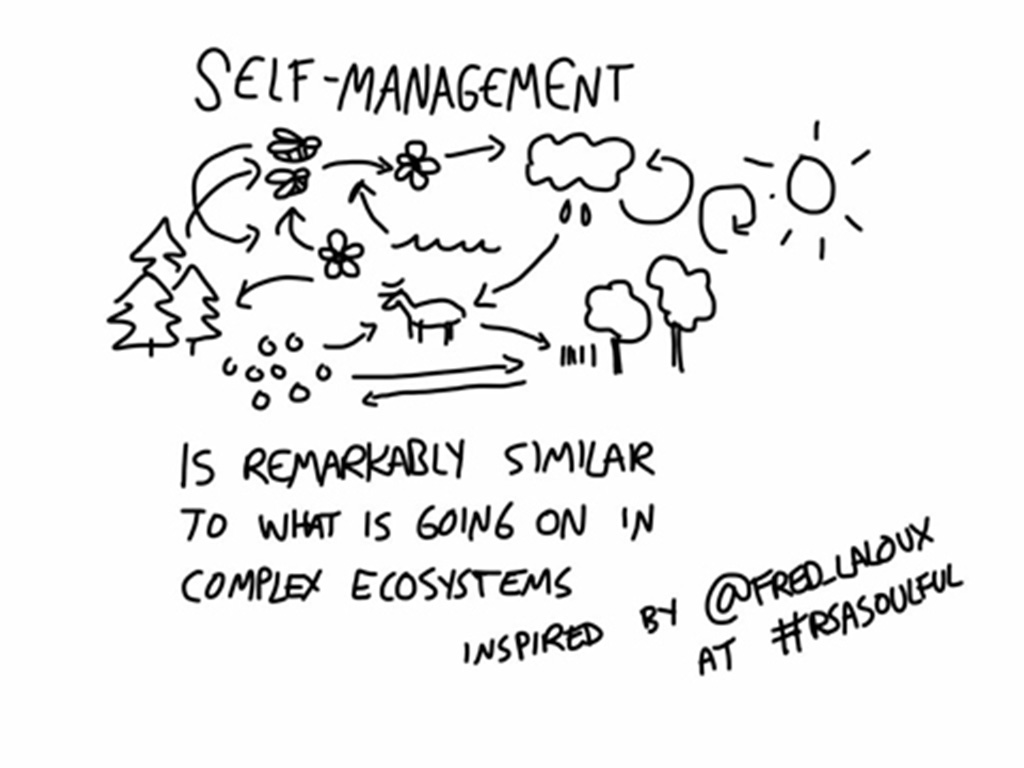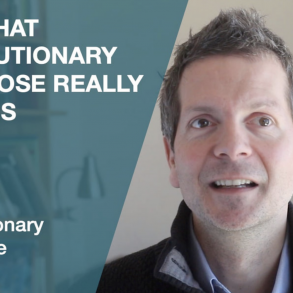Written by Fiona Savage and published at http://fionasavage.co.uk/
The legacy hierarchical approach to management is being replaced by self-organized, self-managed teams which are able to adapt flexibly to changing circumstances to achieve the organization’s purpose, congruent with its values.
 Frederic Laloux’s book “Reinventing Organizations: The development of Teal organisations:” (sic) the Teal model stands for 3 major factors, “Self-management, Wholeness, and Purpose” and uses the phrase “living organism” as a metaphor for the organisational context.
Frederic Laloux’s book “Reinventing Organizations: The development of Teal organisations:” (sic) the Teal model stands for 3 major factors, “Self-management, Wholeness, and Purpose” and uses the phrase “living organism” as a metaphor for the organisational context.
Teal organisations include:-
- Buurtzorg: a Netherlands-based healthcare non-profit company that provides community nursing.
- ESBZ: a publicly financed school in Berlin, covering grades 7 to 12, which has attracted international attention for its innovative curriculum and organizational model.
- FAVI: a brass foundry in France which produces (amongst other things) gearbox forks for the automotive industry and has about 500 employees.
The above are a few of the newer self-managed organisation, however self-managed organisations have been around for decades and are highly successful.
- Semco in Brasil,
- W. L. Gore,
- Whole Foods,
- Patagonia.
This is not some newfangled idea about working; our plant and all living systems organise themselves in this way and have been successful, until mankind started to try to control the system for their own needs.
 Theory U: Leading from the Emerging Future from Otto Scharmer at MIT is a model that is used across all types organisation for social change by creating the capacity for community and organisational wisdom. Theory U encourages leaders to step into and shape the emerging future. Leadership styles found in these organisations are about participatory leadership – leadership that contributes through service…fosters organisational cohesion around a shared purpose…builds meaningful relationships with all stakeholders, encourages participation and collaboration…and always acknowledges the potential of the people in the organisations to collectively create the future that wants to emerge.
Theory U: Leading from the Emerging Future from Otto Scharmer at MIT is a model that is used across all types organisation for social change by creating the capacity for community and organisational wisdom. Theory U encourages leaders to step into and shape the emerging future. Leadership styles found in these organisations are about participatory leadership – leadership that contributes through service…fosters organisational cohesion around a shared purpose…builds meaningful relationships with all stakeholders, encourages participation and collaboration…and always acknowledges the potential of the people in the organisations to collectively create the future that wants to emerge.





